Romancing the Exile
Shaul Magid is one of the most wide-ranging, provocative, and prolific scholars of Hasidism and modern Jewish thought at work today. He is also a leading voice of the American Jewish left. A recent widely read New York Times article about the anti-Zionism and diasporism among young Jews leads with an account of the launch party for his new book of essays, The Necessity of Exile: Essays from a Distance. It describes some of the more than two hundred attendees:
A few came fresh off the subway from a protest in Manhattan that was organized by left-wing Jewish groups calling for a cease-fire in the Israel-Hamas war. They were there to hear from Shaul Magid, 65, whose long, thin white beard and shaved head made him look more like a roadie than a rabbi.
Magid’s path to prominence as a Dartmouth professor and radical pundit has been anything but linear, as he recounts in one of the most personal essays in his new collection. Born in Long Island to parents who were politically liberal, mostly secular members of a Conservative synagogue—checking all the boxes of the typical mid–twentieth-century American Jewish family—Magid grew up knowing next to nothing about Zionism and not much more about Jewish life. As a young man, he rebelled against all of it in search of spiritual depth (to check another generational Jewish box).
In 1977, Magid was living in a communal house in New Mexico when his Jewish acupuncture and shiatsu teacher gave him a book by Zalman Schachter (later Shachter-Shalomi). Reb Zalman, as he was known, was, along with Shlomo Carlebach, one of the leading lights of the early neo-Hasidism of the 1960s and 70s. His book, Fragments of a Future Scroll, was only the second Jewish book Magid had ever read (the first was a Chaim Potok novel), but within a year he had driven his VW bus back to New York and flown to Israel. “I had been seeking a way to live life ‘otherwise,’” he writes. “In Israel I felt I had found it.” Not long after, he was studying in a ba’al teshuvah yeshiva and immersing himself in “the decaying yet vibrant world of the Haredim” in Jerusalem, where he got his first glimpse of ultra-Orthodox anti-Zionism.
Eventually, Magid found the “new world of emerging settlements” on the West Bank more compelling than “quaint and outdated” haredi culture. He cut his “shoulder-length” payos and left Meah Shearim. At the same time, he gravitated to the work of Rabbi Abraham Isaac Kook, one of the leading Ashkenazi rabbis of the pre-State Yishuv and still the principal thinker of religious Zionism. Reading the questing, poetic writings of Rav Kook, who invested the twentieth-century return to the Land of Israel with a romantic, mystical significance, was “like taking a deep breath in a forest.” Magid was soon a messianic religious Zionist.
“I have many memories of being footloose in the West Bank and Gaza in those early days, in the early ’80s,” he writes. He even seriously considered moving with his then-spouse to Atzmona, a coastal settlement in the former Gush Katif bloc in Gaza. Yet a Shabbat spent there, like an earlier visit to an Arab shuk in Nablus, planted seeds of doubt about the settlement movement as a whole. He was troubled by the settlers’ general tendency to see their Palestinian neighbors as little more than “part of the background, like the flora and fauna,” rather than, as he was coming to realize, an indigenous people with “an entire society and culture . . . deeply ingrained in the land.”
He had also grown skeptical of what he calls the “hippie particularism” of those who, like him, found in the alternative lifestyle of the haredim or the settlers the spiritual fire they craved. Their desire to fuse an “ethos of progressivism, nostalgia, and a commitment to fight for the oppressed” with an “ethnic pride that often undermined that fight and those values” was morally unsustainable, “as if playing Bob Dylan’s 1963 protest song ‘Masters of War’ and defending Greater Israel were somehow congruous.”
After receiving rabbinic ordination and serving in the IDF, Magid pivoted again. He returned to the United States and—for reasons that go largely unexplored here—entered the doctoral program in Jewish studies at Brandeis, eventually becoming a professor of Jewish thought, a progressive Jewish intellectual, and a champion of Jewish Renewal. He even found his way back to Long Island, or at any rate not far off its coast, when he took a position as the rabbi of the Fire Island synagogue during the summers.
For all this zigzagging, every stop along Magid’s personal journey has been countercultural, and the figures and thinkers he has studied were all radicals of one sort or another: the Ishbitzer Rebbe (whose paradoxical theology was important to Carlebach); Schachter-Shalomi; Meir Kahane (the subject of his most recent monograph); and the Satmar Rebbe, Rabbi Joel Teitelbaum, whose anti-Zionist thought he first encountered as a young student in Jerusalem. As he makes clear in these essays, Magid’s entire life and career have been a rebellion against the dullness of the liberal, middle-class, suburban American Judaism in which he was raised. Now, long after moving on from hippie particularism in the Holy Land, he has moved on from Zionism itself. What he calls his “tragic love affair with Zionism” is over, and, once more he has pitted himself against the American Jewish establishment. Though as his lionization by the Times and his status as the go-to Jewish thinker for faculty and student activists suggests, he is very much in tune with another establishment.
“Zionism,” Magid writes, “had its time; it did its work; now it can be set aside, along with Manifest Destiny, colonialism, and any number of other chauvinistic and ethnocentric ideologies of the past.” What it cannot be is “an ideology that supports a twenty-first-century nation-state.” He characterizes his position as neither anti- nor post-Zionist but rather as “counter-Zionism,” a position that not only rejects what he sees as the ethnocentric chauvinism of classical Zionism but also its “negation of the diaspora” (shelilat ha-galut). “To say it plainly,” he writes, “while I am not against the State of Israel, I am not in favor of it functioning as an exclusively ‘Jewish’ state.” This sentence raises too many questions to qualify as plain speaking.
If Magid had simply opposed the maximalist claim that the right to self-determination in Israel is “unique to the Jewish people,” as the controversial 2018 Nation-State Law affirmed, one could see how this would not necessarily constitute opposition to the State of Israel. Yet Magid rejects the very idea of a Jewish state, however minimally that Jewishness might be defined. He goes on to say that he is “in favor of Israel (or whatever name it may choose to adopt) becoming a liberal democracy, a ‘state of all its citizens’ on the land Jews and Palestinians call home, a place that can offer a just political reality for two peoples.” Fair enough, but if Israel were to become a binational state, it would no longer be Israel, as Magid himself concedes when he acknowledges that the name of the state would, in this scenario, be ripe for a change. A Talmud scholar presented with Magid’s counter-Zionism and the typical one-state progressive anti-Zionism might rightly ask, mai nafka mina (what is the practical difference between them)?
His critique of liberal Zionism is similarly ambiguous. Some critics have claimed that the very idea of liberal Zionism is oxymoronic, since a state founded on liberal values of democracy, individual freedom, and equality under the law cannot simultaneously be a state that aligns itself with, and privileges, one ethnonational group above others. Others argue that even if liberal Zionism were once, in principle, viable, it is no longer so. Post-1967 liberal Zionism was founded on the belief that the occupation, for all its illiberalism, was temporary. But the occupation has now lasted for fifty-seven years—three-quarters of Israel’s existence—and, in the West Bank at least, it has grown ever more repressive and entrenched. This has led a growing number of scholars and intellectuals to maintain that Israel’s expansionist policies since 1967 have produced what is, in practice, a “one-state reality” that has utterly vitiated liberal Zionism.
Magid clearly endorses the second, essentially empirical, argument against liberal Zionism. Whether he also supports the first, more sweeping and a prioricritique is difficult to answer. On one hand, he presents “Zionism as the ideology that resulted in the founding of an ethnostate that Zionists call a ‘Jewish state,’” adding, “I do not think an ethnostate can function as a true democracy, and certainly not a liberal one.” (His repeated labeling of Israel as an “ethnostate”—a term coined by American white supremacists to describe the regime they aspire to—puts an exclamation mark on that claim.)
On the other hand, Magid also writes of “humanistic strains” in “earlier iterations of Zionism” and hedges that “liberalism and Zionism” are not “compatible in any easy way.” That hedge is noteworthy. If it is simply hard to see liberalism and Zionism coexisting, those dedicated to a synthesis of the two, however imperfect—and where in the world are liberalism and nationalism ever seamlessly conjoined?—might rightly conclude that they should not give up trying. Especially when the alternative of accommodating the national aspirations of Jews and Palestinians within one sovereign state is harder by orders of magnitude. No one would deny that the prospects for a two-state solution have dimmed over the past decade and have grown even bleaker after October 7. But there is practically no constituency in Israel that will mobilize in favor of a binational solution.
Jews in Israel differ considerably over whether Jewishness is primarily a religious, cultural, or simply ancestral identity; they are even more sharply divided about the role it should play in politics and government. But surveys have consistently shown that the plurality of world Jewry that lives in Israel want the state to remain “Jewish” in some shape or form. Nor is there substantial support for a binational solution among Palestinians in the West Bank and Gaza. Most Israeli Jews and Palestinians who advocate for a single state “from the river to the sea” envision not any kind of shared sovereignty but a state where either Jews or Palestinians will dominate. Magid’s counter-Zionism is not so much a political program as it is a utopian posture or attitude—from a distance, to adapt his book’s subtitle.
Magid’s “thoughts on antisemitism and oppression”—the subject of chapter 7—have not, as they say, aged well. He argues that since the rise in antisemitism in the countries of the West in recent years is neither “state sanctioned” nor the object of broad social approval, Jews—“considered by some to be the most prosperous minority group in America”—are not “oppressed.” On the contrary, Jews today—those who live in Israel and, implicitly, those who live abroad but support the Jewish state—are on the side of the Zionist “oppressors.” Magid concedes that “antisemitism can exist without oppression” and that anti-Jewish invective, let alone vandalism of Jewish institutions and violence against Jews, is “heinous.” But he appears to abide by the general progressive antiracist credo that racism is only a political problem—in effect, only racism—when prejudice and power are conjoined.
Curiously, Magid draws on Hannah Arendt’s rather infamous “Reflections on Little Rock” for his argument. In that 1959 essay, Arendt criticized the federal integration of public schools in the Arkansan capital for blurring the difference between legally mandated segregation and forcible desegregation. The first was the province of the political (in which discrimination was rightly outlawed), the second the purview of the social (in which the right to discriminate should be sacrosanct). Magid seizes on this argument to claim that although American Jews may continue to be subject to private disdain and even de factoexclusion from certain clubs and societies, they are not “oppressed” so long as, “in Arendt’s terms, if the society prevents antisemitism from moving from the social to the political realm.” In other words, Jews may be disdained or even harassed on campus, and this harassment may even be part of a political program or movement, but as long as it is not enshrined in law, it is not a political problem and, in fact, is probably a distraction.
But just how committed is Magid to Arendt’s distinction between the political and the social? Would he follow the logic of “Reflections on Little Rock” by opposing the 1964 Civil Rights Act, which, among other things, bans private businesses from refusing service on the basis of “race, color, religion, or national origin”? Progressives frequently complain of the weaponization of supposedly unfounded claims of antisemitism to suppress anti-Zionist speech. They fail to see how their reduction of everything to a neat dichotomy of the powerful and the powerless inoculates anti-Zionism from legitimate criticism. If not antisemitic per se, anti-Zionism has often served as a mask for, or gateway drug to, antisemitism.
At George Washington University, where I teach, pro-Palestinian protesters projected the phrase “Glory to our Martyrs” on the library building not long after Hamas’s October 7 attack. Within the George Washington encampment created the last week of April, one sign declared, “Students will go back home when Israelis return to their true home (Europe, the U.S., etc.)”; another featured the Palestinian flag and the words “Final Solution” emblazoned on it. Others have witnessed and experienced worse over the last several months. This level of antisemitism merits more than a tut-tut (or, even worse, a “yes, but”).
The Necessity of Exile becomes far more interesting when, in his last two chapters, Magid finally gets around to explaining what he means by “exile.” His discussion of the thought of Rav Shimon Gershon Rosenberg (1949–2007), often known by his acronym Shagar, is fascinating and the best essay in the book. The chapter also contains a valuable translation into English of Shagar’s essay “Religious Post-Zionism (on Yom ha-Atzma’ut).”
Though still little known outside Israel, Shagar has come to be recognized as a strikingly original and important religious thinker. Despite founding a yeshiva in Efrat, a settlement in the West Bank, and subscribing for most of his adult life to Kookian settler ideology, Shagar eventually emerged as one of its most penetrating critics. Religious Zionism, Shagar argued, was an attempt to sacralize what was, at bottom, a secular national movement, which shared with other such movements a preoccupation with “questions of blood, language, land, and indigeneity,” along with a quintessentially “modernist” yearning for “the unification of disparate parts into a complete whole.” Out of this came an extremist ideology that viewed exclusive Jewish possession of the whole Land of Israel as a religious imperative.
Shagar’s philosophy drew on a postmodern perspective that was suspicious of “grand narratives,” including the messianism of religious Zionism, and valued “multiplicity, fracture, deconstruction, uncertainty, and ambivalence”—the quintessentially exilic qualities that religious Zionism repudiated. Rescuing the religious Zionist project required an “integration of exile into the existential posture of the Israeli nation-state”—a step that was necessary to create a society capable of accommodating and even affirming the varying groups and viewpoints within its borders rather than aiming to subsume, marginalize, or actively suppress them. Neither secular nor religious Zionism, with their commitment to “negating the exile” (shelilat ha-golah), could accomplish this. As Shagar himself put it in the essay Magid translates, “for religious Zionism to exist at all, in these times, it must become ‘religious post-Zionism,’” a theology “that can see the other, the Arab, as belonging to the homeland, without negating his own sense of at-home-ness in the homeland.”
Magid elaborates on this “notion that exile is necessary—in fact, productive—for the Jews” in his final chapter. In doing so, he distinguishes his position from diasporists past and present, who have been almost as eager to negate the exile as their Zionist opponents. Although for Zionism the founding of the State of Israel ended exile, for anti-Zionists and diasporists, exile was viewed as synonymous with oppression, and since the Jews were not an oppressed people in America, they could be said to live in golah (dispersion, or diaspora) but not in galut (exile). This is not Magid’s position.
Magid also rejects the position of Daniel and Jonathan Boyarin, who unequivocally celebrated the diasporic condition in their famous 1993 article, “Diaspora: Generation and the Ground of Jewish Identity.” And he clearly differs from the emphasis on the rootedness of Jews in countries they consider their home found in the historical work of the late David Shneer and Caryn Aviv or the political philosopher Alan Wolfe’s At Home in Exile: Why Diaspora Is Good for the Jews. He rejects either a Zionist or diasporist supersession of exile.
Magid devotes most of his final chapter to brief discussions of four Jewish thinkers—Rabbi Menachem Mendel Schneerson of Chabad (1902–1994), Rabbi Joel Teitelbaum of Satmar (1887–1979), the Yiddish essayist and fiction writer Isaac Bashevis Singer (1904–1991), and the Lithuanian rosh yeshiva Rabbi Aaron Samuel Tamares (1869–1931). For all their differences in interpretations of galut and attitudes toward Zionism, “they all resisted the Zionist view that exile was somehow ‘over,’ or that it was an inferior existential state that needed to be overcome by either assimilation or aliyah to Israel.” Whether they regarded exile as necessary and providential or foundational to Judaism rightly understood, “they all viewed [exile] in positive terms.”
Magid deals at greatest length with Teitelbaum’s political theology, the subject of his current research. “Reb Yoelish,” as he was known to his Satmar followers, was arguably the most implacable and outspoken of all ultra-Orthodox opponents of Zionism in the postwar period. Although others became less strident in their antagonism after the Shoah and the creation of the State of Israel or even, like Schneerson, adopted a more ambivalent non-Zionist stance, Teitelbaum was unwaveringly hostile. Adhering to the traditional covenantal theology, he declared the Holocaust a divinely ordained punishment of the Jewish people for the Zionist heresy of rejecting exile and pursuing the restoration of Jewish sovereignty before the advent of the messiah, which, for Teitelbaum, amounted to a brazen attempt to usurp God’s prerogative by hastening the redemption. Teitelbaum made his most sustained argument against Zionism and for the “necessity of exile” in his 1961 book Vayoel Moshe. There, he lambasted Zionism and the “evil state” that was its embodiment for what he alleged was the aim to use “as much influence as possible to bring all Jews to Israel such that none remain in the diaspora”—an aim that was as theologically impudent as it was ignorant of the constructive purpose of exile. Despite the liturgical phrase “because of our sins we were exiled from our land,” recited in the musaf prayer on Jewish festivals, exile was not simply punitive. Drawing on everything from midrashic and talmudic texts to kabbalistic literature, Teitelbaum argued that God had scattered Jews because they were meant “to purify the air of the world in preparation for the indwelling of the Shekhinah” (divine presence). From this, Magid concludes:
It may seem somewhat odd, considering their enclavist orientation, for a Satmar sectarian to argue that Jews need to be in the world in order to bring exile to a close. But Teitelbaum believed that Jews doing mitzvot in the diaspora were engaged in a necessary act of “purifying the air of gentile lands” and gathering the final holy sparks exiled there. For Teitelbaum, negating the diaspora undermines the messianic process.
The tension that Magid highlights is indeed odd. It is also odd that he concludes his discussion of Teitelbaum on this note. The reader of this passage in The Necessity of Exile who knows little if anything about the Satmar Rebbe (and given the book’s reception,there are likely many such readers) might reasonably take him to be a proponent of the tikkun olam theology that pervades American Judaism. Such a reader would probably not know that Teitelbaum, convinced of “the necessity of exile” and the evil of Zionism, forbade immigration to Palestine, even after learning in 1941 about the Nazi ghettoization of Polish Jewry and the killing fields of the Eastern Front. Nor would they know that Tetielbaum’s escape from Nazi-occupied Hungary in 1944, thanks to the Hungarian Zionist leader Rudolf (Reszo) Kasztner, was in any way fraught. Kasztner was the point person in protracted negotiations with Adolf Eichmann to exchange over a million Hungarian Jews for much-needed war materiel, including ten thousand trucks and other supplies. This ambitious “trucks-for-blood” scheme mostly foundered, though Kastzner was able, in the end, to secure safe passage for himself and more than sixteen hundred Hungarian Jews, including Teitelbaum and his family, on a train that departed Budapest in late June 1944, when the deportations of Hungarian Jews to Auschwitz were at their peak and the crematoria in Birkenau in overdrive. Kasztner’s agreement to this bargain, his personal role in selecting who was to be saved while leaving the rest unapprised of their likely fate, raised profound ethical questions that culminated in one of the principal controversies and court cases in 1950s Israel and ultimately the assassination of Kasztner. Most today view Kastzner’s actions through the lens of what the late Lawrence Langer called “choiceless choices” and judge him more sympathetically as a result. Whether Teitelbaum, who abandoned the very congregation he had dissuaded from taking any measures to save themselves, deserves the same consideration is more dubious. One would know nothing of this, however, from Magid’s terse mention, in parentheses, of the “Zionist Kastner transport” that spared him near certain deportation and killing in the gas chambers.
Meanwhile, the phrase “enclavist orientation” is a kind of Orwellian obfuscation reminiscent of the second Bush administration’s euphemistic talk of “enhanced interrogation methods” to describe systematic torture. It hardly conveys Teitelbaum’s ambition to isolate his Satmar sect as much as possible from not only Gentiles but other Jews, the Orthodox, and even other branches of ultra-Orthodoxy very much included—an ambition realized in the almost exclusively Satmar city of Kiryas Joel in upstate New York today.
I wish that Magid had developed his own theological-political argument for the “necessity of exile” more rigorously and with greater clarity, though I have no doubt that we would still disagree about a great deal. He is right to reject the “negation” of exile, but one ought not idealize it either. Even Edward Said, who thought exile was the necessary condition of the critic, once remarked that it was “strangely compelling to think about but terrible to experience.” It is easy to valorize exile from the perch of an Ivy League university set on a sylvan campus in the charming town of Hanover, New Hampshire; the German Jews deported from Hanover, Germany, in 1941 probably felt differently. Nonetheless, a book that took the pains to work out a positive philosophy of exile based on deep engagement with a broad spectrum of Jewish thought would have been well worth reckoning with. But that is a book that these “essays from a distance” only gesture at.
Comments
You must log in to comment Log In
Suggested Reading
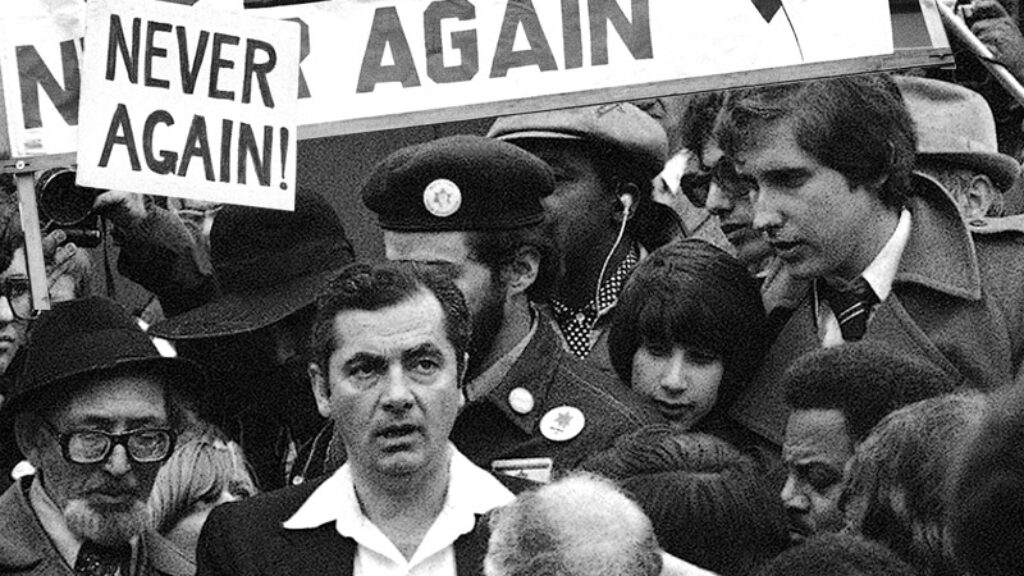
Are We all Kahanists Now?
Shaul Magid attempts to show us how much contemporary Jews have inherited from a man most have tried to forget.
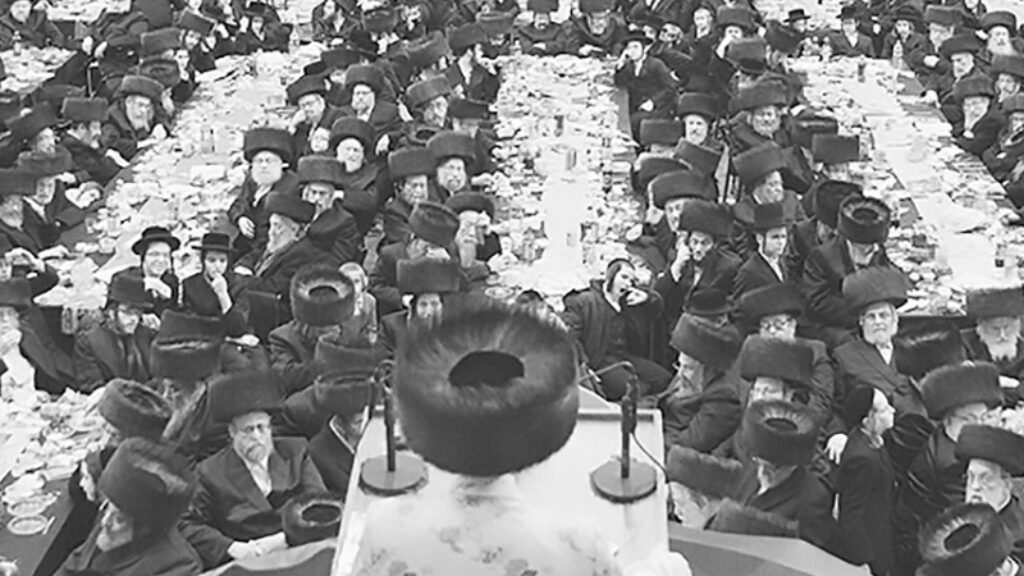
Satmar, American-Style
The explosive growth of Satmar Hasidim has shocked and worried many who see their culture as un-American. But two new books argue it was only in America that the sect could have flourished at all.
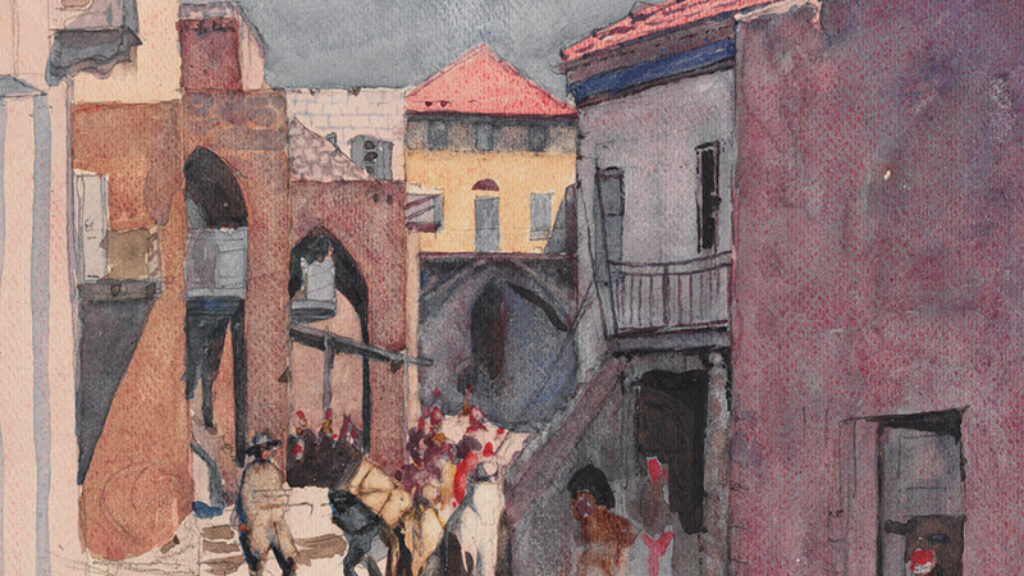
Wishful Republic
What lessons can be learned from the city of Haifa, and what does its culture suggest about the likelihood and limitations of a binational state?

A Tale of Two Exiles
What did a seditious Sicilian duchess and the heretical son of a chief rabbi have to do with the beginnings of French antisemitism?
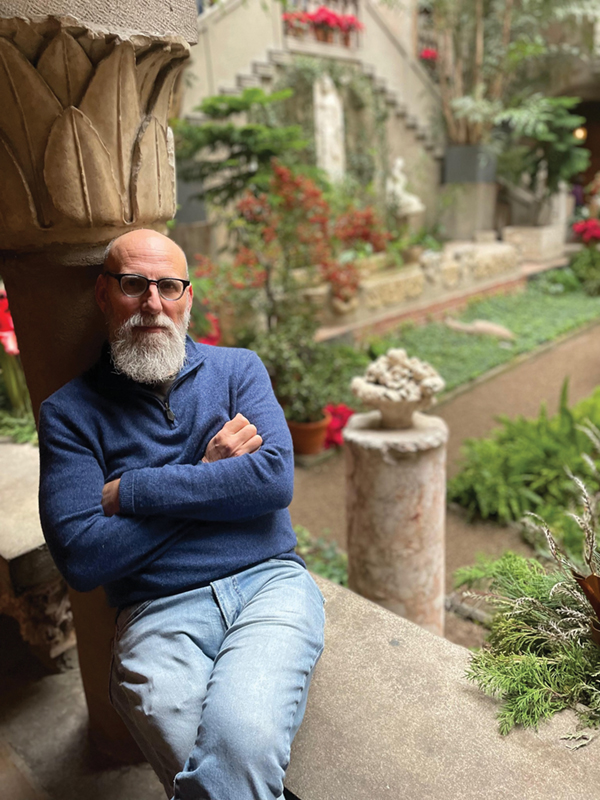
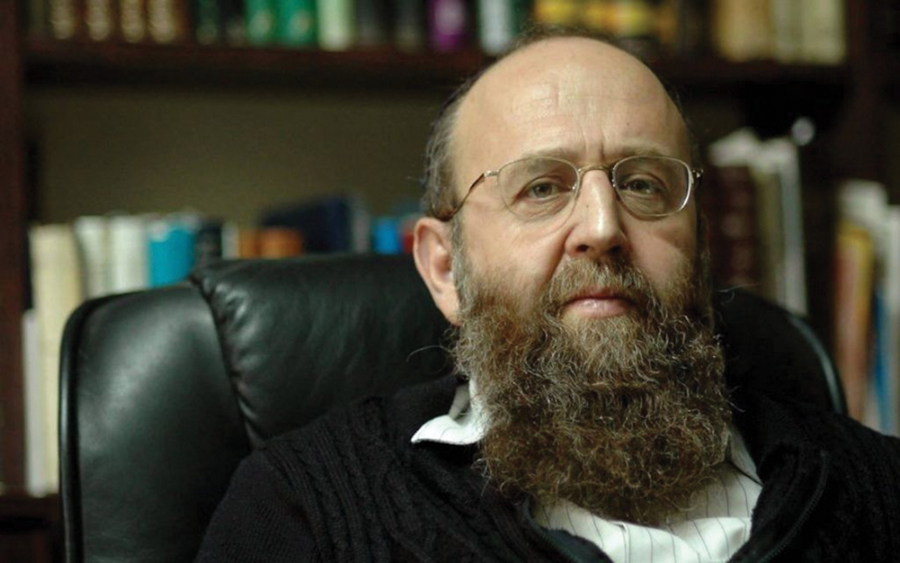
JJGross
One has to give Magid credit for consistently being able to monetize and celebrities his terminal shpilkes. One thing is empirically manifest, namely that whatever snake oil he is currently peddling will yet be scuttled and replaced by whatever next snags his abbreviated intellectual attention span.
Gershon Hepner
ANIMATED BY ANIMOSITY
In exile you may miss far more
the animosity of those you’ve left behind
than praises of the people who adore
you for your beauty and the brilliance of your mind.
It is very hard to find
the sort of inspiration from the people who,
though strangers to you, are more kind
than those who are your kith, but are not kind to you
when they find out that you’re inclined
to see the cosmos quite unlike them, and decry
the views of your unexiled mind,
not understanding where you’re coming from and why.
Their animosity you see
as inspiration, learning from the way they fail
to let their spirit be quite free,
unless their views seem scary, off your skeptic scale.